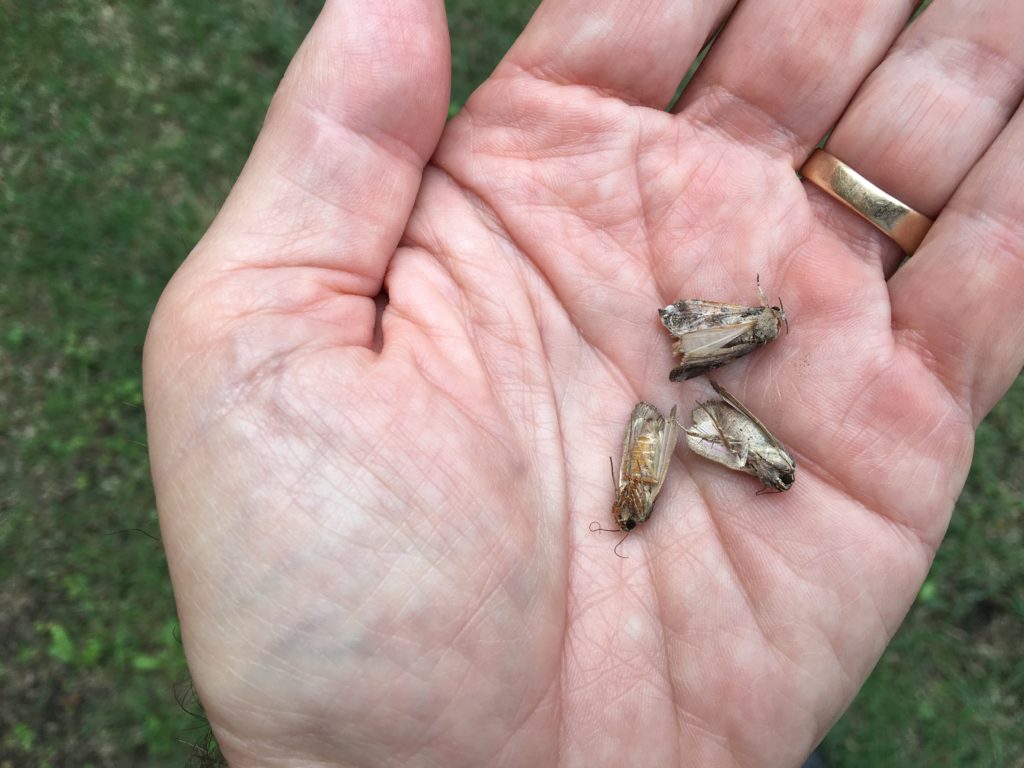If you live in the Dallas/Fort Worth area, or any other place that has had a recent outbreak of fall armyworm caterpillars, you may have noticed an increase in fast-flying, grey-brown moths. I started noticing these last week, and they appear to be growing in numbers today. If you drive early in the morning, or in the evening, you might even catch these moths in your car headlights.
It’s all part of a circle of life: moths lay eggs, which turn into caterpillars, which pupate (think of a cocoon, or chrysalis), then emerge again as moths . This kind of moth outbreak happens commonly enough that Texans, and others around the country, have even given such moths a name. You may hear older citizens and farmers referring to “millers”. Millers, as far as I can tell, is a generic name for any moth that becomes abundant in and around homes. In some areas, millers show up in large numbers in the spring, and in others during the fall. Most people consider them a nuisance, and commonly worry that they are a precursor to some great plague.
Scientifically, these insects are called Noctuoid moths, a collection of several families that include armyworms and cutworms. Night-fliers all, miller moths avoid sunlight and head for hiding places in bushes, tall grasses and flowers when daylight arrives. To see if you have been visited by millers, find some bushes or tall grass and do a little brush beating. If present, you will see big gray moths zig-zagging away. Many of the ones I’ve seen appear to be fall armyworms, which I wrote about a couple of weeks ago as being unusually abundant this year.
With enough warm weather, it is possible today’s miller moths will turn into another generation of caterpillars; but given the long-term forecast for cooler weather in the next two weeks, I’m guessing this won’t happen. With cooler weather, the armyworm life cycle slows considerably, as does its appetite for crops and grasses.
Nevertheless, it won’t hurt to keep a close eye on your vegetable gardens and lawns over the next few weeks. Look for small caterpillars and leaf damage. If you do catch early damage, armyworms and cutworms can be treated with B.t. sprays or with the biological insecticide, spinosad.
By the way, given the warmer temperature cycle we are in, one of the things we can count on will be more and longer pest seasons. Later frosts mean more time for moths like the millers to reproduce and start a new family. One more reason to wish for cooler weather.
